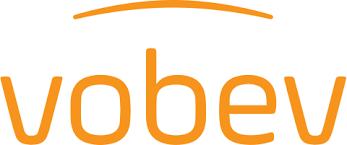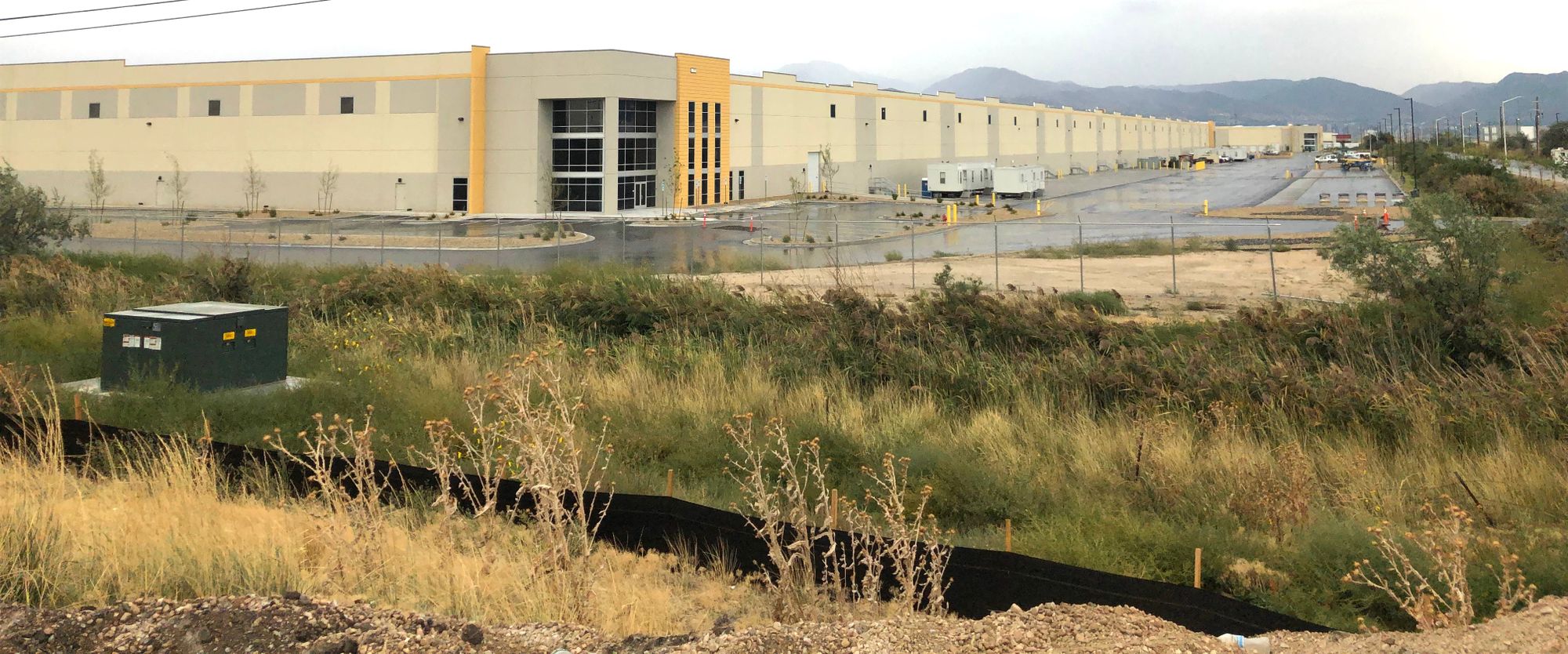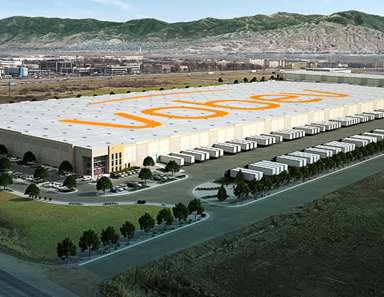A new manufacturer is on the verge of launching a state-of-the-art, 1.15-million-square-foot "canned beverage" manufacturing campus in Salt Lake City before the end of 2021
Roughly five-and-a-half miles west of the point where Latter-day Saint Prophet Brigham Young is said to have struck his cane in the dirt and said, "Here we will build the temple of our God," Eric Cudnohoske and his team are nearing completion of a canned beverage manufacturing campus that will forever shake-up this community, state and industry.

A fifth generation Prussian from the upper Midwest, Cudnohoske is the General Manager of somewhat secretive Vobev, a new company officially launched in January 2021 with no disclosed investors or backers that has nonetheless likely spent tens of millions of dollars to
- Tie-up 65 acres of land in Salt Lake City's rapidly growing industrial tract in and around 5600 West and Interstate 15, and
- Build-out two manufacturing plants (one of 850,000-square-feet, the other of 300,000-square-feet), and (as Cudnohoske told me),
- Transform "Salt Lake (into) the beverage center of the industry."

And to be clear, I did ask Cudnohoske about the company's funding, history and the like, each of which he declined to answer (which is fine, by the way, especially since we still live in a free country).
According to the company news release distributed in mid-September, Vobev's approach is
"... designed to (provide) a one-stop shop for beverage brands with simplified production choices that includes everything from recipe creation and packaging design, to making, filling, packaging, storing, and shipping beverages."
By taking a soup-to-nuts approach to the canned beverage industry, Cudnohoske stated that the Vobev approach is centered around
- Making cans,
- Filling cans, and
- Logistics solutions.
Cudnohoske explained that one of the current problems in the canned beverage industry in the United States is having very few vertically integrated manufacturers. Hence, cans are often built on one end of the country, then shipped across land to a facility where they are filled and packed, and then shipped back across country to the beverage company, distributor or retailer. In other words, it's
- Highly inefficient,
- More costly, and
- Environmentally unfriendly.
With its three-pronged approach, Cudnohoske said he plans to address all three concerns, starting with Vobev's plans to "shorten lead times by 10 weeks" (versus a "traditional can manufacturer or filler").
Factoids and Info About the Canned Beverage Industry
Before learning about Vobev or speaking with Cudnohoske, I had no idea about the size of the canned beverage industry within the U.S. or the "hoops (beverage companies) had to jump through" before I ended up with a Dr. Pepper soda caressing my throat. As it turns out, both are a pretty big deal.
Case in point, over 97 million beverage cans* were produced in the U.S. in 2019.
And according to ResearchAndMarkets**, the beverage cans market is estimated to reach $17.24 billion by 2025, growing at a Compound Annual Growth Rate (CAGR) of 4.9% from 2020 through 2025.
What I found fascinating, however, are the steps and processes needed to produce an aluminum beverage can. {NOTE: In my opinion, the video below does a pretty good job of telling this story in under five minutes.}
Speaking of beverage can manufacturing, How Products Are Made explains that
- Recycling can save up to 95% of the energy cost of making aluminum cans;
- The Adolph Coors Company manufactured the first aluminum beer can in 1958;
- Aluminum is derived from an ore called bauxite, and U.S. aluminum producers import bauxite (primarily from Jamaica and Guinea);
- The aluminum can industry now reclaims more than 63% of used cans; and
- American can makers produce about 100 billion aluminum beverage cans a year, equivalent to one can per American per day.
By vertically integrating manufacturing, filling and logistics, Vobev expects to take hundreds of trucks off the highways.
The company is also investigating solar power and water reclamation processes to be more environmentally friendly than others in the beverage can industry.
Cudnohoske also explained that the Covid-19 breakout of 2020 was especially hard on the canned beverage industry.
Why Utah? ... AND ... What's Coming for Vobev and Utah?
He went on to say that the great people of Utah, plus the ease of access to
- A rail spur,
- Rail lines,
- Highways, and a
- Major airport
were each factors that led he and his team to select Salt Lake City as Vobev's home.

With its ability to support small-, medium- and large-sized customers across such product lines as
- Waters,
- Carbonated soft drinks,
- Energy drinks,
- Wine,
- Spirits,
- Seltzers, and more,
Cudnohoske told me that Vobev already has over 20 customers signed-up for production when the company's manufacturing lines start operating in the mid- to latter-part of the fourth quarter of this year.
"We have a condensed supply chain," he explained. "(And) we want to explode the industry."
Although Vobvev is clearly an industrial manufacturer in the greater Food & Beverage marketplace (aka, F&B), make no mistake about it, Vobev is definitely deploying technology as a strategic difference maker vis-à-vis its competitors.
"I consider us a beverage tech firm," Cudnohoske said.
Today, this particular BevTech firm employs about 50 people, and Vobev plans to expand to "400 highly skilled professional jobs over the next 18 months with premium pay to the greater Salt Lake City area."
With the addition of Vobev to Silicon Slopes' growing F&B ecosystem, I believe it will be very interesting to watch what's next ... both for Vobev and with the Food & Beverage marketplace within Utah.
SOURCES:
** – "Beverage Cans Market - Industry Analysis, Market Size, Share, Trends, Growth And Forecast 2020 - 2025" report.



